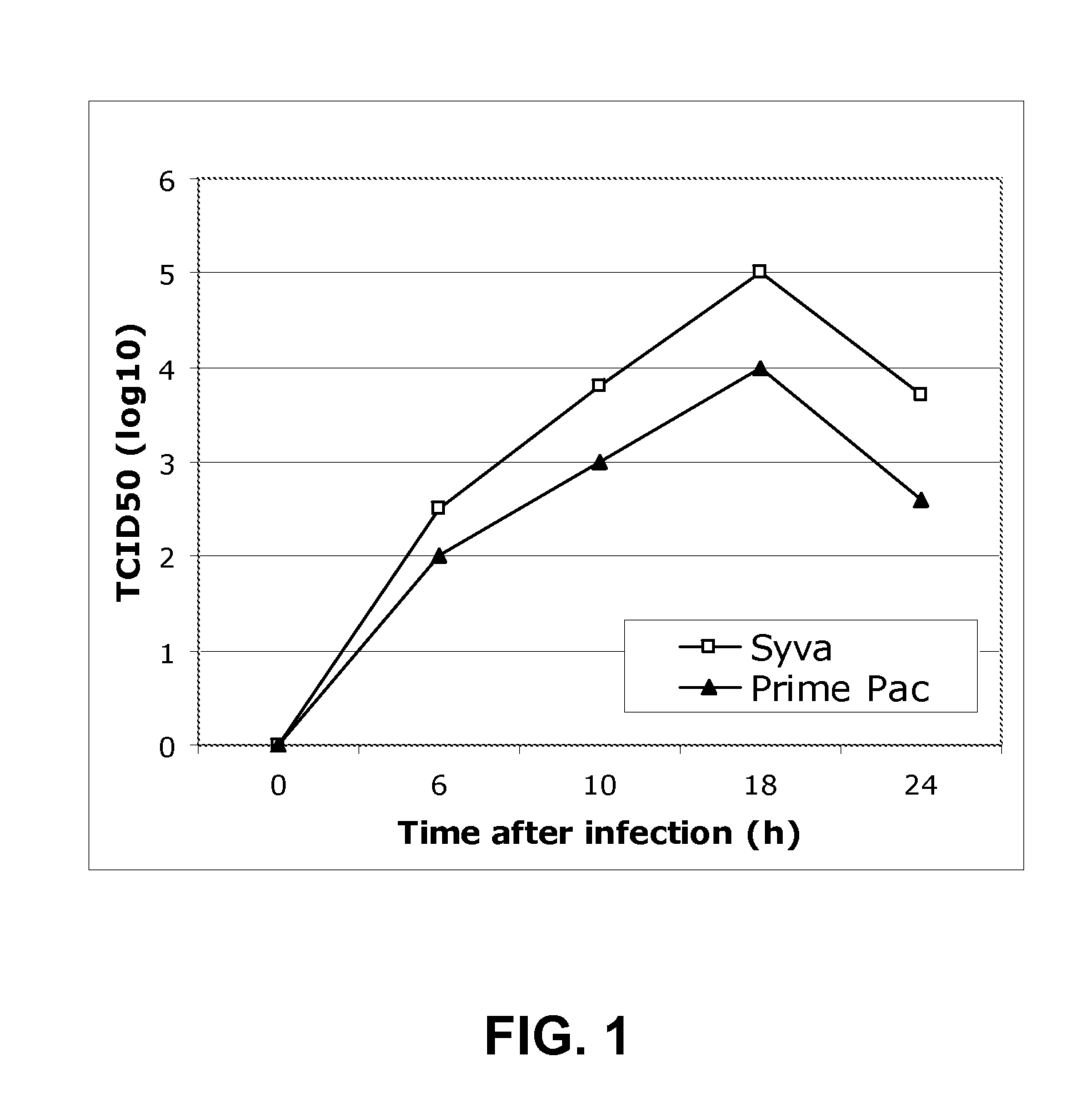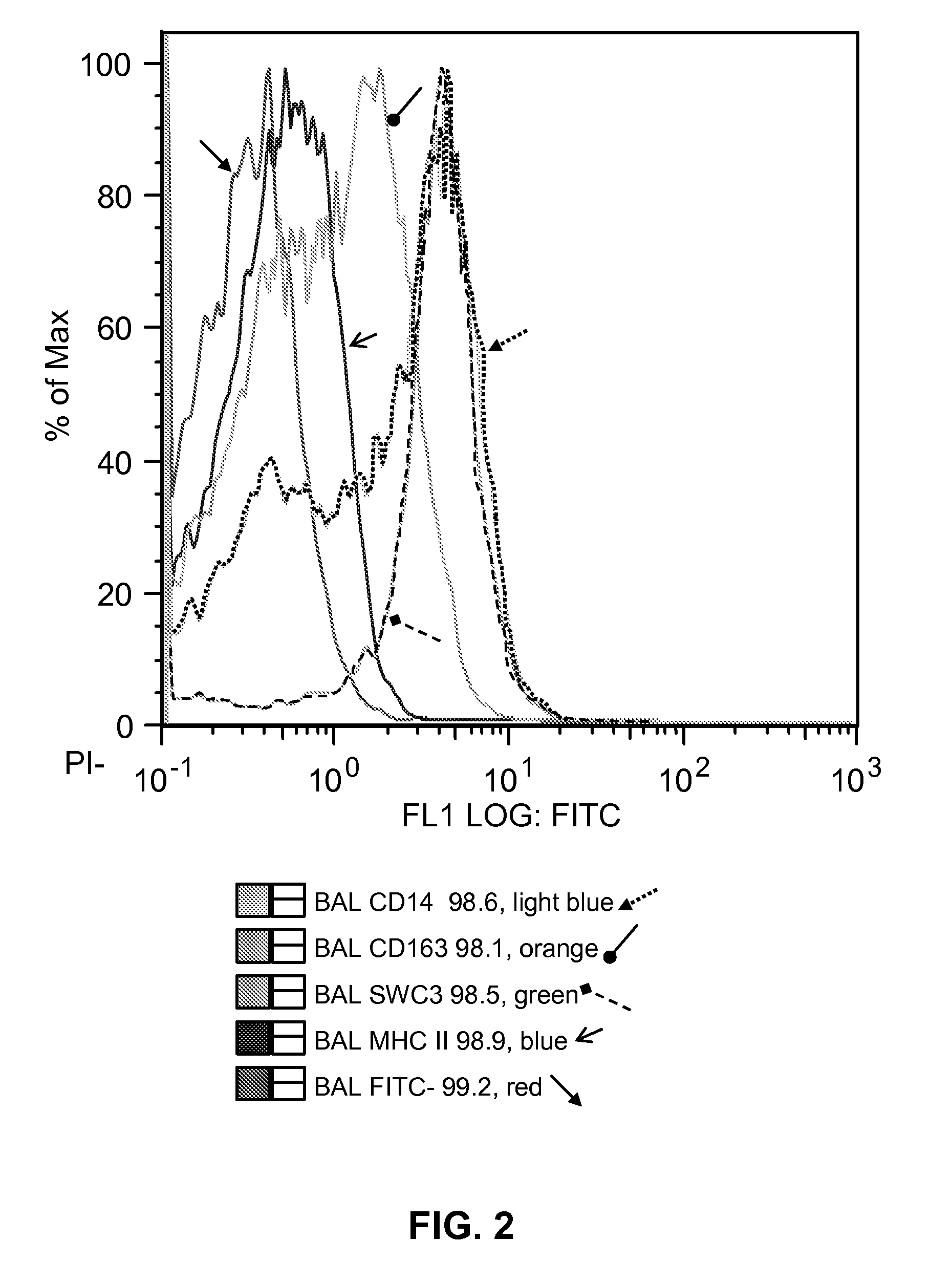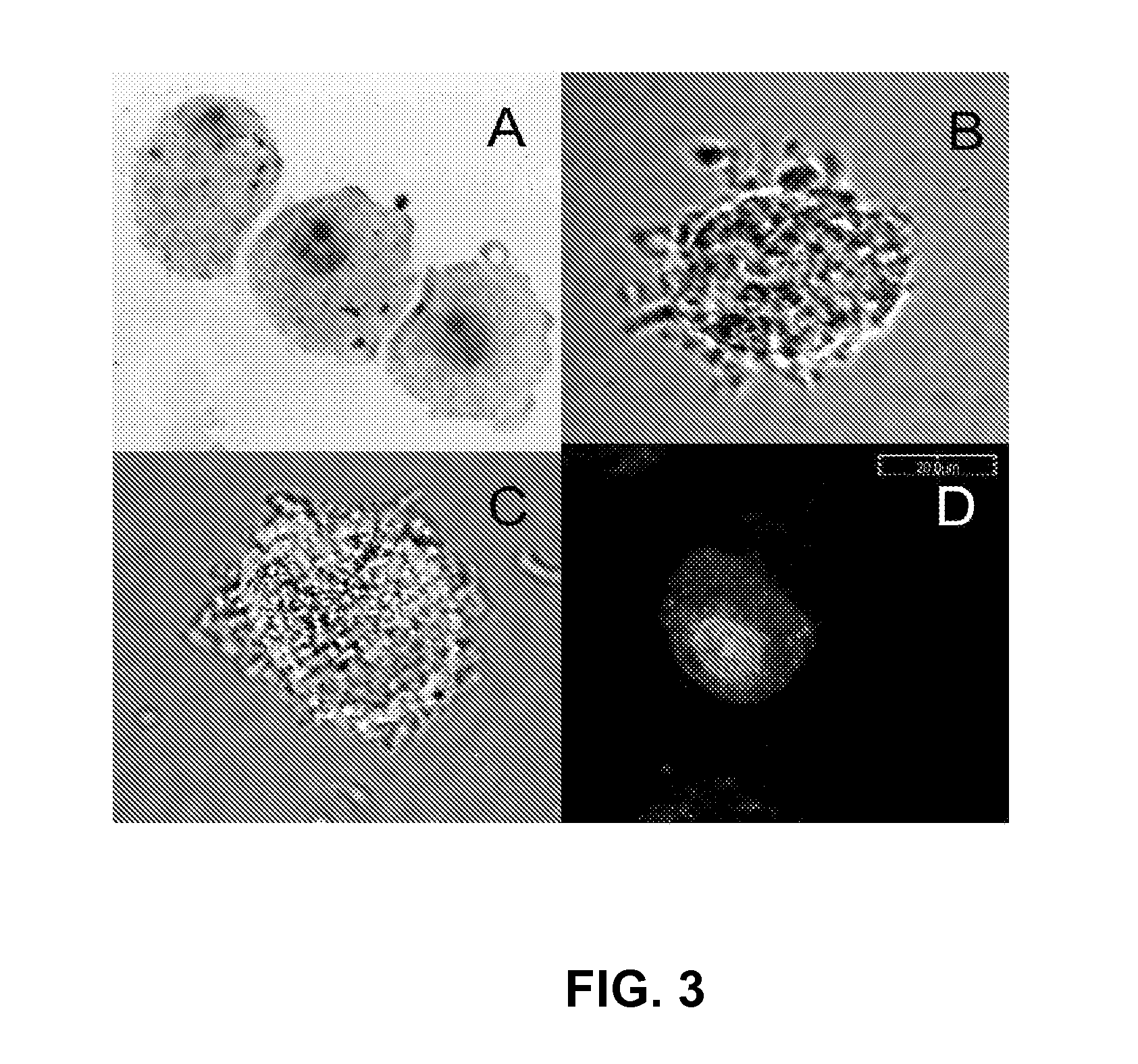Non-simian cells for growth of porcine reproductive and respiratory syndrome (PRRS) virus
a technology of non-simian cells and porcine respiratory syndrome, which is applied in the direction of antibody medical ingredients, drug compositions, immunological disorders, etc., can solve the problems of high degree of inherent variability in cells isolated from different pigs, the economic consequences of the disease, and the threat to the swine industry
- Summary
- Abstract
- Description
- Claims
- Application Information
AI Technical Summary
Benefits of technology
Problems solved by technology
Method used
Image
Examples
example 1
The Non-Simian Cell Isolate UIMAC FBAL-A is Capable of Supporting PRRSV Growth
[0059]The porcine alveolar macrophage cell line UIMAC FBAL-A was derived from the lung of a 45 day old porcine fetus by bronchoalveolar lavage with culture medium. The initial culture was expanded in vitro from the initial few thousands of cells to several million over a period of 6 months. At that time, experiments were conducted to measure the growth of PRRS virus. These experiments showed that the FBAL-A cells were able to support the replication of the virus. This isolate was not deliberately transformed yet demonstrated an ability to grow and propagate in culture and a phenotype for the ability to support infectivity and growth of PRRS virus.
[0060]The cell culture conditions were as follows. Culture medium: RPMI 1640 supplemented with L-glutamine and 25 mM HEPES. The medium is supplemented with non-essential amino acids, sodium pyruvate, gentamicin, and 10% fetal bovine serum. Cells were incubated at ...
example 2
The Non-Simian Cell Isolate ZMAC is Capable of Supporting PRRSV Growth
[0067]In addition to the development of FBAL-A cells, an independent effort resulted in the development of a second cell isolate designated as ZMAC. ZMAC cells were characterized and observed to have the capability of supporting PRRSV infectivity and growth.
[0068]In this independent attempt, six 58 day-old fetuses were aseptically harvested from the uterus of sow 9688 obtained from the swine herd of the University of Illinois Veterinary Medicine Research Farm. This sow was a cross-bred pig with the following breed composition: 17 / 32 Landrace, 13 / 32 Yorkshire and 2 / 32 Duroc. The fetuses were transported to the cell culture laboratory and their lungs dissected inside of a bio-safety cabinet under sterile conditions.
[0069]Cells in the airways of the lungs from each of the 6 fetuses were isolated separately by bronchoalveolar lavage. Approximately 100,000 cells were obtained from the lung of each fetus. The cells from...
example 3
Immortalized Non-Simian Cell Lines Capable of Supporting PRRSV Growth
[0077]A cell or cell line of the invention is established as one or more of a spontaneous immortalized variant, deliberately transformed derivative, other variant or derivative, and an otherwise immortalized version of a primary cell or cell line as described herein.
[0078]For instance, techniques are utilized as would be understood in the art, such as involving viral transformation technology; fusion with an immortalized partner; exposure to chemical / physical conditions including; e.g., irradiation; and technology relating to manipulation of telomerase function. In a preferred approach, the tert system is used to establish a cell or cell line which can avoid, delay, or otherwise alter senescence. See, e.g., Carrillo et al., Veterinary Immunology and Immunopathology 89 (2002) 91-98; Kwak S et al., 2006 Animal Biotechnology, 17: 51-58; http: / / www.atcc.org / common / products / CellImmortProducts.cfm.
[0079]In preliminary is...
PUM
| Property | Measurement | Unit |
|---|---|---|
| fixed time period | aaaaa | aaaaa |
| size | aaaaa | aaaaa |
| humidity | aaaaa | aaaaa |
Abstract
Description
Claims
Application Information
 Login to View More
Login to View More - R&D
- Intellectual Property
- Life Sciences
- Materials
- Tech Scout
- Unparalleled Data Quality
- Higher Quality Content
- 60% Fewer Hallucinations
Browse by: Latest US Patents, China's latest patents, Technical Efficacy Thesaurus, Application Domain, Technology Topic, Popular Technical Reports.
© 2025 PatSnap. All rights reserved.Legal|Privacy policy|Modern Slavery Act Transparency Statement|Sitemap|About US| Contact US: help@patsnap.com



